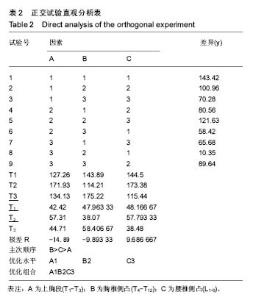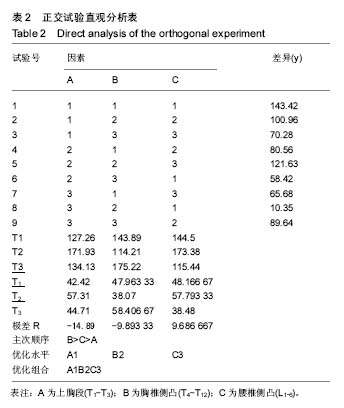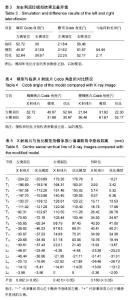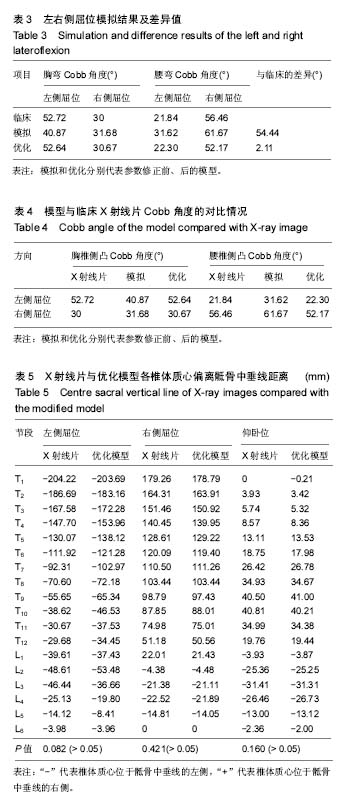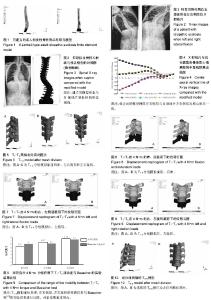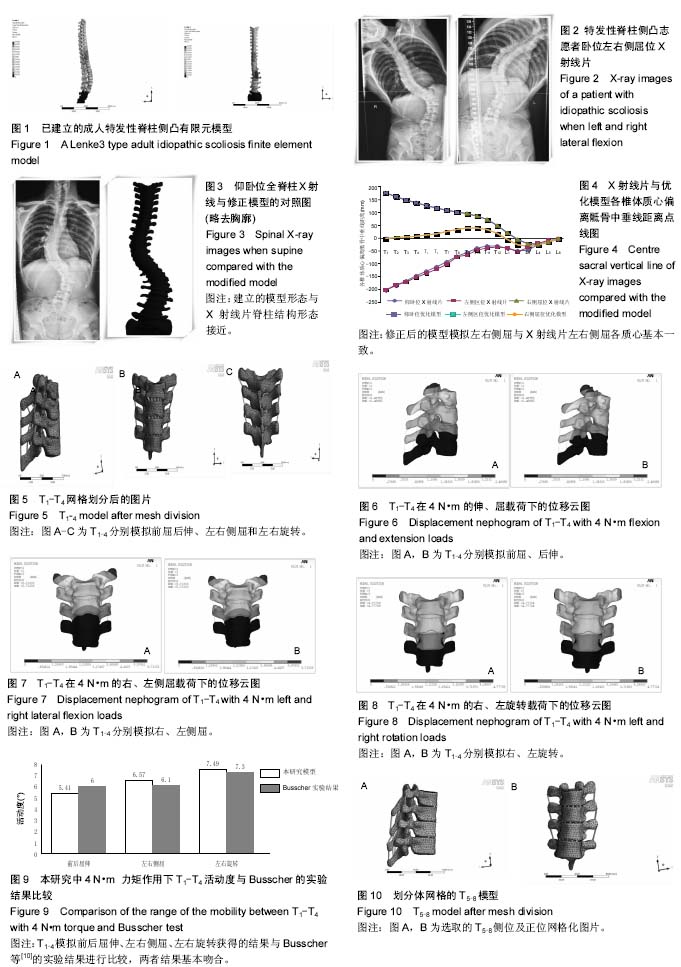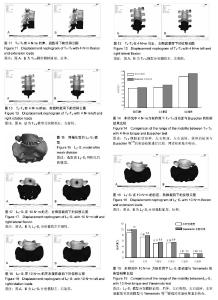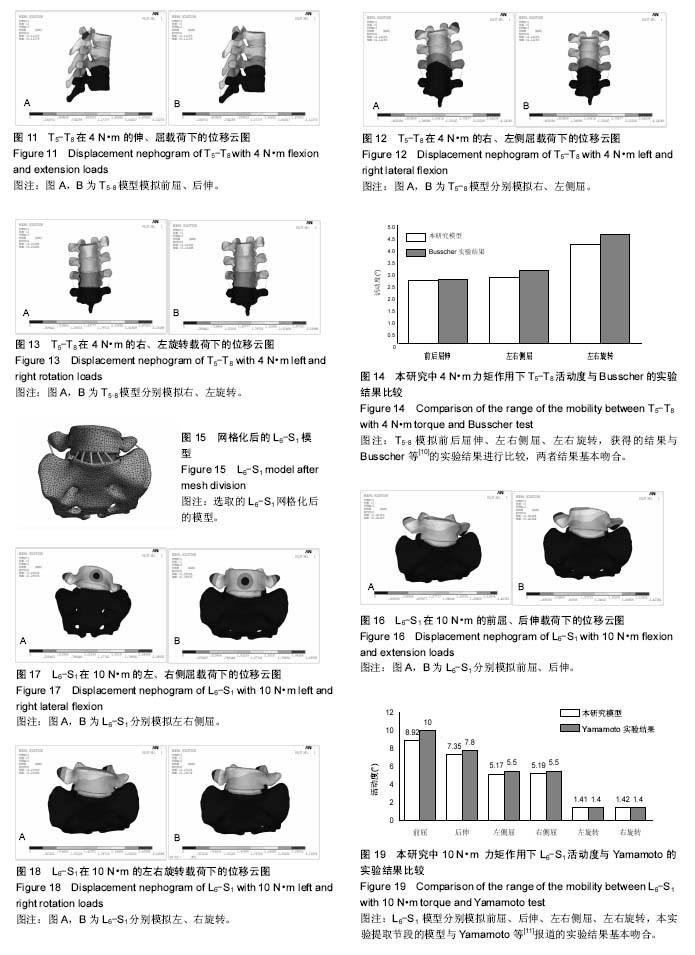| [1] Nie WZ, Ye M, Liu ZD, et al.The patient-specific brace design and biomechanical analysis of adolescent idiopathic scoliosis.J Biomech Eng. 2009;131(4):041007.[2] 刘少华, 张宏其, 吴建煌, 等.半脊椎所致先天性脊柱侧凸三维有限元模型的建立[J].中国现代医学杂志,2013,23(28):33-37.[3] 林旻中. 特发性脊柱侧凸伴骨盆矢状位失衡有限元建模及三维矫形生物力学研究[D].中南大学,2013.[4] Little JP, Adam CJ.The effect of soft tissue properties on spinal flexibility in scoliosis: biomechanical simulation of fulcrum bending. Spine (Phila Pa 1976). 2009;34(2):1976)E76-82.[5] Petit Y, Aubin C E,Labelle H.Patient-specific mechanical properties of a flexible multi-body model of the scoliotic spine.Med Biol Eng Comput. 2004;42(1):55-60.[6] 王哲, 汪正宇, 王冬梅, 等.基于CT图像的侧凸脊柱胸腰段及骶骨整体三维有限元模型的建立[J].机械,2007,34(4):24-26.[7] 汪正宇, 刘祖德, 王哲, 等.脊柱侧凸有限元模型的建立和参数优化[J].北京生物医学工程,2008,27(1):28-32+60.[8] 汪学松, 吴志宏, 王以朋, 等.三维有限元法构建青少年特发性脊柱侧弯模型[J].中国组织工程研究与临床康复, 2008,12(44):8610-8614.[9] Lee JY, Lee JW, Pang KM, et al. Biomechanical evaluation of magnesium-based resorbable metallic screw system in a bilateral sagittal split ramus osteotomy model using three-dimensional finite element analysis.J Oral Maxillofac Surg. 2014;72(2):402 e401-413.[10] Busscher I, van Dieen JH, Kingma I, et al.Biomechanical characteristics of different regions of the human spine: an in vitro study on multilevel spinal segments.Spine (Phila Pa 1976). 2009;34(26):2858-2864.[11] Yamamoto I, Panjabi MM, Crisco T, et al.Three-dimensional movements of the whole lumbar spine and lumbosacral joint.Spine (Phila Pa 1976). 1989;14(11):1256-1260.[12] King HA, Moe JH, Bradford DS, et al.The selection of fusion levels in thoracic idio-pathic scoliosis.J Bone Joint Surg Am.1983;65(9):1302-1313.[13] Lenke LG, Betz RR, Harms J, et al.Adolescent idiopathic scoliosis: a new classif- ication to determine extent of spinal arthrodesis. J Bone Joint Surg Am. 2001;83-A(8):1169-1181.[14] Qiu G, Zhang J, Wang Y, et al.A new operative classification of idiopathic scoliosis: a peking union medical college method.Spine (Phila Pa 1976). 2005;30(12):1419-1426.[15] Vanderby R Jr, Daniele M, Patwardhan A, et al.A method for the identification of in-vivo segmental stiffness properties of the spine.J Biomech Eng. 1986;108(4):312-316.[16] Cheung KM, Luk KD. Prediction of correction of scoliosis with use of the fulcrum bending radiograph.J Bone Joint Surg Am. 1997;79(8):1144-1150.[17] Viviani GR, Ghista DN, Lozada PJ, et al.Biomechanical analysis and simulation of scoliosis surgical correction. Clin Orthop Relat Res. 1986; (208):40-47.[18] Stokes I A, Gardner-Morse M. Three-dimensional simulation of Harrington Distraction instrumentation for surgical correction of scoliosis. Spine (Phila Pa ,1976) 1993;18(16):2457-2464.[19] Ghista DN, Viviani GR, Subbaraj K, et al. Biomechanical basis of optimal scoliosis surgical correction. J Biomech. 1988;21(2): 77-88.[20] Lafage V, Dubousset J, Lavaste F, et al. 3D finite element simulation of Cotrel-Duboussetcorrection. Comput Aided Surg. 2004;9(1-2):17-25. |
